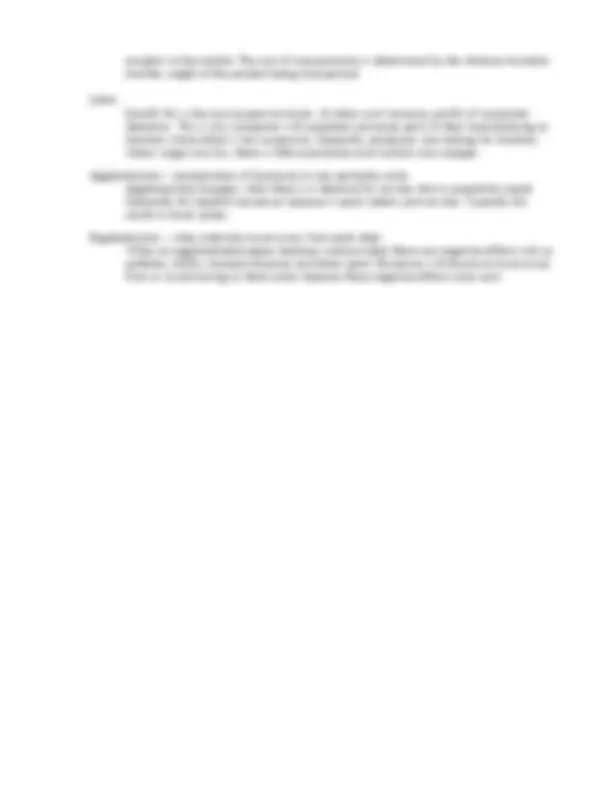



Study with the several resources on Docsity

Earn points by helping other students or get them with a premium plan


Prepare for your exams
Study with the several resources on Docsity

Earn points to download
Earn points by helping other students or get them with a premium plan
Community
Ask the community for help and clear up your study doubts
Discover the best universities in your country according to Docsity users
Free resources
Download our free guides on studying techniques, anxiety management strategies, and thesis advice from Docsity tutors
Weber's least cost theory is an economic model used to determine the optimal location for manufacturing plants based on minimizing costs and maximizing profits. The theory considers factors such as raw material sources, market location, transportation costs, labor costs, agglomeration, and deglomeration. Assumptions include resources, markets, and processing plants being in the same country, equal demand and opportunities throughout the region, and fixed labor costs with unlimited availability.
What you will learn
Typology: Lecture notes
1 / 2

This page cannot be seen from the preview
Don't miss anything!


Theory was created to determine the location of manufacturing plants. The location could be different based on if the final product weighed more or less than the raw materials. According to the theory, plants will be located to maximize profits and minimize costs.
Locations are determined by identifying the sources of RAW MATERIALS (R OR S) as well as the MARKET (M). Once these are identified, lines are down to show points of equal transport costs. Where the three circles come together is where the PLANT (P) should be located.
The Least Cost Theory is also based on several assumptions.
Resources, markets and processing plants are all located in one country. The area under consideration is the same in climate, topography, technology and economic system. Considers only one finished product at a time. Transportation costs vary based on the weight of the items shipped and distance shipped. Raw materials are at a fixed and known location Market location is also at a fixed and known location Labor has a fixed cost, but there is an unlimited availability and labor is available at any production site selected There is an equal demand throughout the region and equal opportunities to purchase the product throughout the region.
Considering those assumptions there are four factors that affect costs that changed based on locations.
Transportation Labor Agglomeration Deglomeration
Transportation Least Cost Theory states that the location of a processing plant will in an area that ensures the lowest cost of moving raw materials to the processing plant and moving the finished
products to the market. The cost of transportation is determined by the distance traveled and the weight of the product being transported.
Labor Usually this is the most expensive factor. As labor costs increase, profits of companies decrease. This is why companies will sometimes outsource parts of their manufacturing to locations where labor is less expensive. Generally, employers are looking for locations where wages are low, there is little unionization and workers are younger.
Agglomeration – concentration of businesses in one particular area Agglomeration happens when there is a demand for services that a population needs. Generally this benefits businesses because it pools talents and services. Typically this results in lower prices.
Deglomeration – when industries move away from each other When an agglomerated region becomes overcrowded, there are negative effects such as: pollution, traffic, strained resources and labor pools. Businesses will choose to move away from or avoid moving to these areas because these negative effects raise costs.